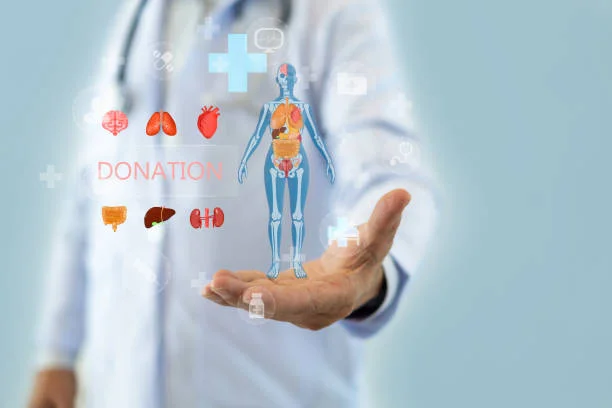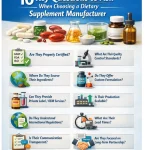The decision to donate your body to science represents a profound final gift—one that advances medical education, improves surgical techniques, and contributes to research that may save countless lives. Each year, thousands of individuals choose whole-body donation as their end-of-life plan, providing medical students with irreplaceable learning opportunities and enabling researchers to develop new treatments and surgical innovations. Unlike organ donation for transplantation, which occurs immediately after death to save specific patients, whole-body donation serves educational and research purposes over months or years. Understanding how to donate body to science–its process, requirements, and implications–helps individuals make informed decisions about this generous contribution to medical science.
Unlock more insights from our expert guides—discover related posts curated for you.
Understanding Whole-Body Donation
Whole-body donation programs accept deceased individuals for anatomical study, medical education, and research. Medical schools rely heavily on donated bodies to train future physicians, allowing students to understand human anatomy in ways that no textbook, model, or computer simulation can replicate. Research institutions use donated bodies to study disease processes, test new surgical procedures and medical devices, develop forensic techniques, and advance understanding of human physiology.
The donation process differs fundamentally from organ and tissue donation. Organ donation occurs immediately after death to transplant viable organs to patients awaiting life-saving procedures. Whole-body donation, conversely, involves the entire body and serves educational rather than transplantation purposes. Individuals can register as both organ donors and body donors, though organ donation takes precedence if viable organs can save lives. If organs are recovered for transplantation, the body may no longer qualify for anatomical donation depending on the accepting organization’s criteria.
Who Can Donate?
While body donation is a generous intention, not everyone qualifies. Each organization maintains specific acceptance criteria, which vary considerably between institutions. Generally, potential donors must be at least 18 years old to pre-register, though some programs accept younger donors with parental consent. There is typically no upper age limit—donors in their eighties and nineties are regularly accepted.
However, several conditions typically disqualify potential donors. Bodies with infectious diseases such as HIV, hepatitis B or C, tuberculosis, or certain antibiotic-resistant infections generally cannot be accepted due to health risks for students and researchers. Significant trauma to the body, including extensive burns, decomposition, or autopsy, usually renders bodies unsuitable for educational purposes. Extreme obesity or emaciation may result in rejection, as these conditions can complicate anatomical study.
Certain medical conditions also affect eligibility. Bodies with communicable diseases, extensive surgical alterations, missing limbs, or organ removal beyond routine procedures may not qualify. Some programs decline bodies of individuals who died from COVID-19 or other contagious conditions. Additionally, if death occurs far from the accepting institution, transportation logistics and costs may preclude donation.
Because acceptance criteria vary significantly, individuals interested in donation should contact multiple programs to understand specific requirements and increase the likelihood of acceptance when the time comes.
The Registration Process
Registering for body donation requires advance planning and cannot be arranged immediately after death. The process begins by researching and selecting an appropriate program. Medical schools constitute the most common recipients, with most U.S. medical schools operating body donation programs. Additionally, private organizations like Science Care, MedCure, and various research institutions accept donations.
When selecting a program, consider geographic proximity—most programs prefer donors within their state or region due to transportation logistics and costs. Research the organization’s reputation, understand how they use donated bodies, and clarify whether they return cremated remains to families and, if so, the typical timeframe.
The registration process typically involves completing an application form with personal information, medical history, and next-of-kin contact details. Most programs require notarized consent forms documenting your voluntary decision to donate. You’ll receive an identification card to carry in your wallet indicating your donation wishes and providing 24-hour contact information for the organization.
Crucially, inform your family members, healthcare proxy, and executor about your donation plans. Even with pre-registration, organizations require next-of-kin authorization at the time of death. Family members unaware of donation wishes or opposed to the decision can prevent donation from occurring, making open communication essential.
Update your advance directives and estate planning documents to reflect donation intentions. Provide the organization’s contact information to your family and healthcare providers to ensure they can quickly notify the program upon your death.
What Happens After Death
When death occurs, family members or healthcare providers must immediately contact the body donation program—most operate 24-hour phone lines for this purpose. Time sensitivity is critical, as programs typically require notification within a few hours of death. The organization evaluates whether the body meets acceptance criteria given the circumstances of death and any medical conditions present.
If accepted, the organization arranges transportation of the body from the place of death—whether a home, hospital, or hospice facility—to their facility. Most programs cover transportation costs within their service area, representing significant financial savings compared to traditional funeral arrangements. This free transportation constitutes one of the practical benefits of body donation for families facing financial constraints.
The body typically remains with the program for one to three years, depending on the institution’s needs and curriculum. During this time, medical students study anatomical structures, practice surgical techniques, and develop the clinical skills essential to their future medical practice. Research programs may use donated bodies to test medical devices, study disease processes, or advance surgical techniques.
After the Study Period
Following the study period, organizations cremate the remains at their expense. Most programs return cremated remains to families upon request, though the timeframe varies from several months to several years after death. Families should clarify return policies during registration, as some programs conduct annual memorial services where multiple donors’ ashes are interred together rather than returning remains individually.
Many programs hold annual memorial services honoring donors and their contributions to medical education. These ceremonies provide closure for families and allow medical students to express gratitude for the profound gift that made their education possible. Some institutions invite donor families to attend these services, creating meaningful connections between donors’ legacy and the students they helped train.
Important Considerations
Body donation is free for donors and families, with organizations covering transportation and cremation costs. However, families remain responsible for any memorial services, death certificates, or obituaries they choose to arrange. Unlike traditional funerals, viewing and visitation are not possible with body donation, as the body must be transported quickly and preserved for study.
Traditional funeral services, embalming, and open-casket viewings are incompatible with body donation requirements. Families desiring these rituals should consider other end-of-life arrangements or plan memorial services without the body present.
Pre-registration does not guarantee acceptance—organizations evaluate bodies at the time of death and may decline donation based on circumstances. Having alternative arrangements ensures families aren’t left without options if donation cannot proceed.
Making the Decision
Choosing to donate your body to science represents an enduring contribution to medical advancement and education. By taking time to research programs, complete registration, and communicate your wishes clearly to family members, you ensure this generous gift can be fulfilled, leaving a lasting legacy in the physicians you help train and the medical knowledge your donation advances.
Spotlight on excellence: read our featured post and get inspired today







